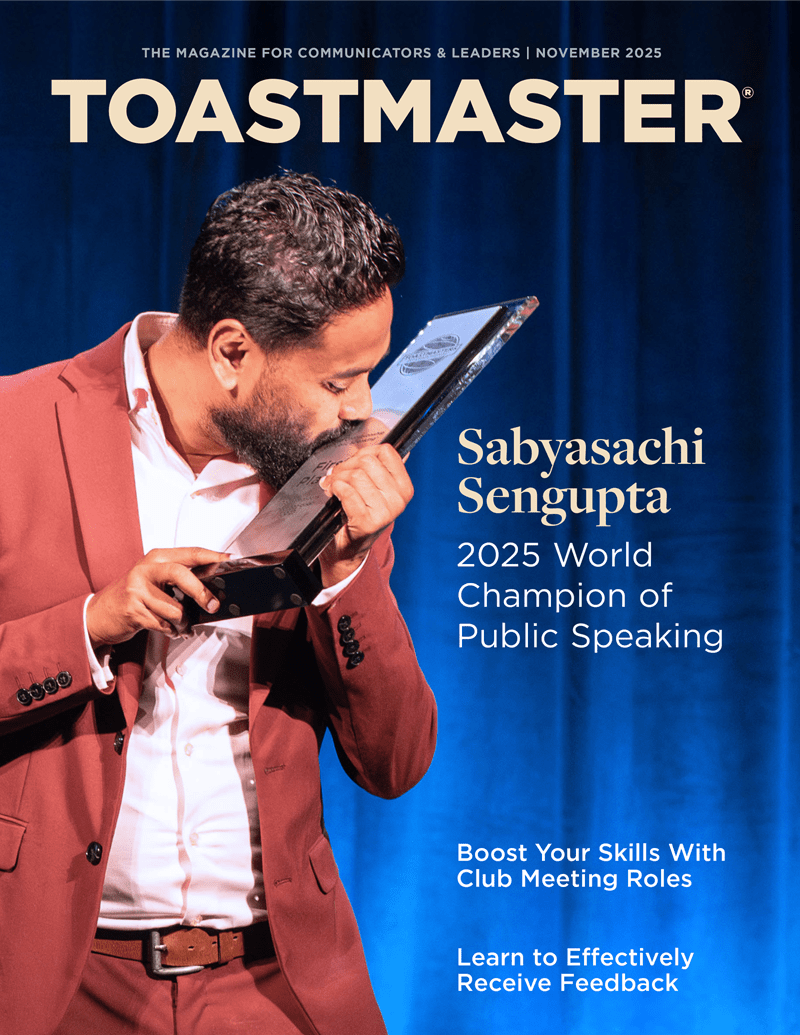Write a purpose statement and add the main points in a bulleted list. The statement should concisely explain your goal. Treat the bullet points like a map that will guide you and the audience to the end result.
Consider creating the opening last. Often, it’s only after you’ve written the whole speech that you discover the best way to introduce it.
Close with impact. What do you want the audience to take away? Send them off with an intriguing fact, a memorable moment from your story, or a concrete direction to take action.
Rehearse, rehearse, rehearse. Don’t plan to “just wing it.” If you’re trying to inspire or motivate, you must speak with a finely crafted sense of urgency that can only come from practice. Persuasion usually requires emotion, and when you’re trying to entertain, you need a high-energy delivery. Vocal variety and body language can add immeasurably to informative presentations, which can often be dry and dull.
Kate McClare, DTM , is a professional writer and editor who joined Toastmasters in 2011. She is a member of Miami Advanced Toastmasters Club in Kendall, Florida, and an Area Director for District 47, Southeast Florida and The Bahamas.




